The 5 Best Exercises To Lose Weight, According to Science
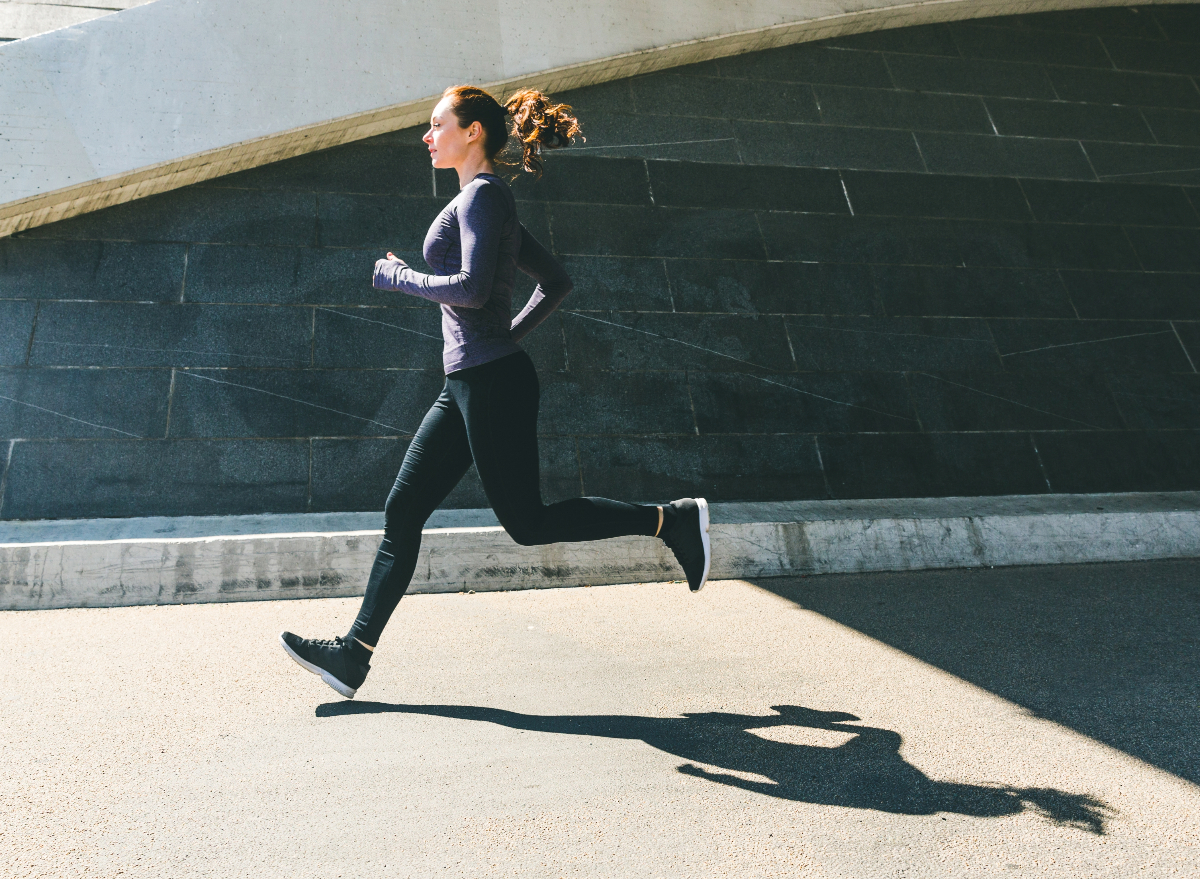
If you browse the web looking for weight loss advice, you'll find a wide range of suggestions. While many workout methods can be effective for slimming down and achieving your ideal physique, some are better than others. When in doubt, the most efficient way to separate the good from the bad is by turning to science. We did exactly that and have five of the best exercises to lose weight, according to science.
The following are the most productive, science-backed exercises for weight loss, with studies that support how beneficial they are. Consider incorporating these into your current workout routine or starting from scratch by using these to reach your weight loss goals. Note that all of these methods still require you to maintain a caloric deficit overall, so be sure you don't compensate for your hard work by eating more!
Keep reading to learn all about five of the best exercises to lose weight, according to science. And when you're finished, be sure to read The Best 5-Minute Daily Walking Workout for Women To Lose Weight.
Sprinting
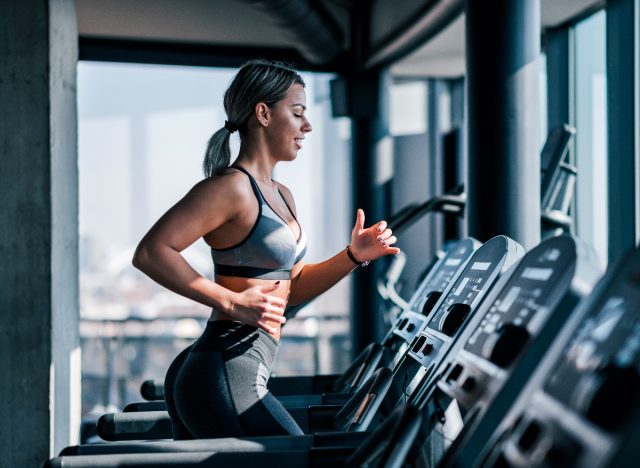
Sprinting offers a powerful cardiovascular workout that effectively burns calories. It's an anaerobic activity, which means it demands energy rapidly and can quickly exhaust the oxygen available, promoting fat oxidation post-workout.
According to a study published in Applied Physiology, Nutrition, and Metabolism, sprint interval training is an excellent time-efficient weight loss tool. The research showed a substantial decrease in body fat and waist circumference among healthy young women.
To perform a sprint, begin in a standing position with your feet hip-width apart. Lean forward slightly, and start running as fast as possible. Pump your arms back and forth to gain momentum. Continue the sprint for a short distance or time, maintaining an upright posture. Repeat for the target time.
Barbell Back Squats
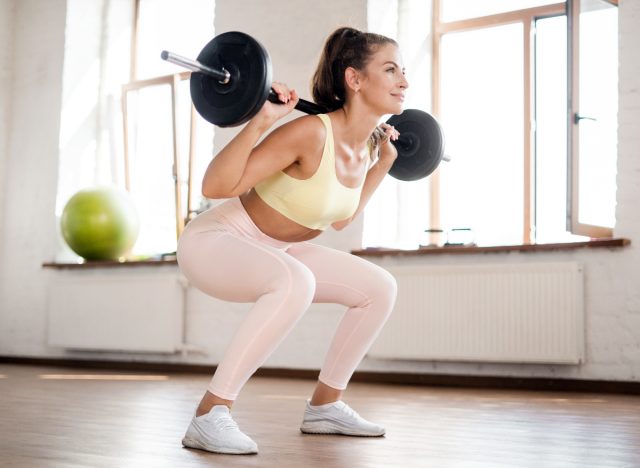
Barbell squats are a compound movement that engages multiple muscle groups, increasing the calorie burn and muscle-building potential. Research shows that barbell back squats are effective for decreasing body fat percentage, especially compared to regular bodyweight squats.
To perform a barbell back squat, stand in front of a squat rack, and position a barbell at shoulder level. Grasp the barbell with an overhand grip, and lift off the rack. Position the barbell on your upper traps, keeping your chest up and your core braced. Lower your body by bending at the knees and hips, pushing through the full foot. Once your thighs are parallel to the ground or lower, rise back to the starting position. Repeat for the target repetitions.
HIIT (High-Intensity Interval Training)
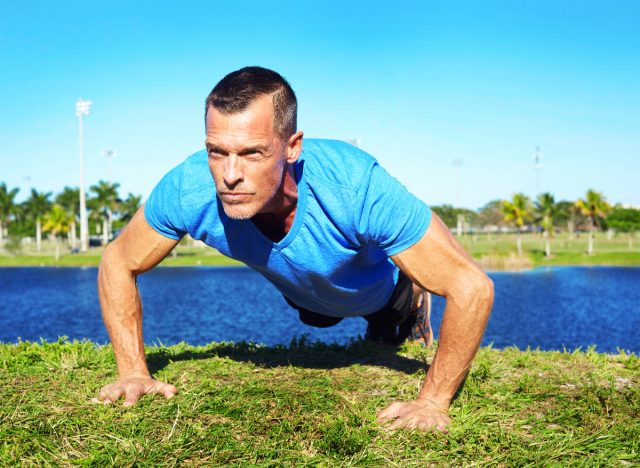
HIIT workouts involve short bursts of high-intensity activity followed by a rest or low-intensity period. They elevate the heart rate rapidly and are effective in burning more calories in less time. According to research published in BMJ Open Sport & Exercise Medicine, HIIT training can be very effective for losing weight as well as increasing cardiovascular fitness.
A popular exercise within HIIT is the burpee. To perform a burpee, begin in a standing position. Drop into a squat position, and place your hands on the ground. Kick your feet back, putting you into a pushup position. Perform a pushup, then quickly return your feet to the squat position. Jump into the air, and extend your arms overhead. Repeat for the target repetitions.
Jump Rope
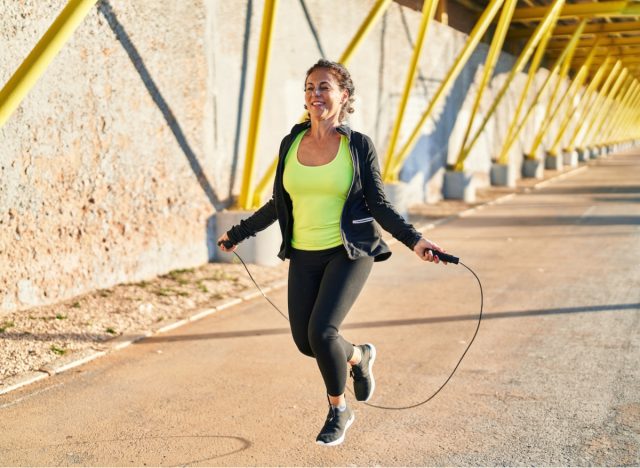
Jumping rope is a full-body workout that improves cardiovascular endurance and burns a significant number of calories. Jump rope has a very high MET value (a method of measuring how much energy your body expends), making it among the more efficient exercises for weight loss. Plus, according to a study published in the Journal of Physical Therapy Science, 12 weeks of musical jump rope training proved to be incredibly beneficial in decreasing body weight.
To properly jump rope, hold the rope handles with your palms facing outward. Start with the rope behind your heels. Rotate your wrists to swing the rope over your head. As the rope approaches your feet, jump over it. Maintain a rhythm, and keep the jumps low to the ground. Repeat for the target time.
Hip Thrusts
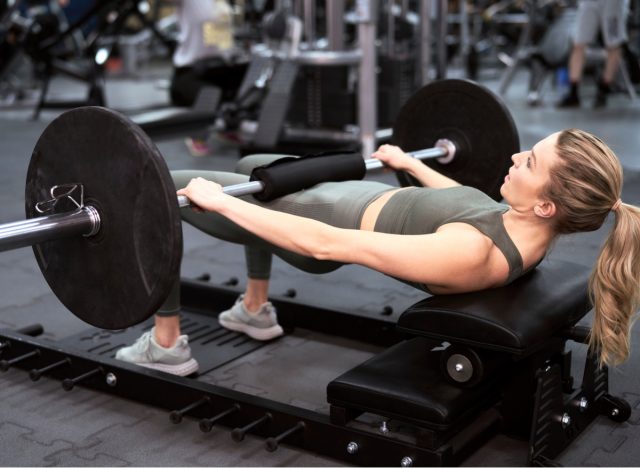
Hip thrusts are an effective way to target the glutes, building strength and size. This exercise works the glutes very heavily. Research shows the hip thrust engages the glutes more than a hex bar deadlift. As a large muscle group, this torches a lot of calories and increases metabolism as the muscles develop. This aids in weight loss overall by helping you maintain a caloric deficit. Plus, more research reveals that performing hip thrusts can boost sprint performance, further supporting your weight loss efforts.
To perform a hip thrust, begin seated on the ground with a bench behind you and a barbell over your hips. Lean back against the bench so that your shoulder blades are on the edge of the bench. With your feet flat on the floor, push through the full foot to lift the barbell by extending your hips. Squeeze the glutes at the top of the movement for about one second. Lower your hips back to the ground. Repeat for the target repetitions.
- Source: https://pubmed.ncbi.nlm.nih.gov/24905559/
- Source: https://www.ncbi.nlm.nih.gov/pmc/articles/PMC10439966/
- Source: https://www.ncbi.nlm.nih.gov/pmc/articles/PMC8292807/
- Source: https://pubmed.ncbi.nlm.nih.gov/21681120/
- Source: https://www.ncbi.nlm.nih.gov/pmc/articles/PMC5574342/
- Source: https://pubmed.ncbi.nlm.nih.gov/28151780/









